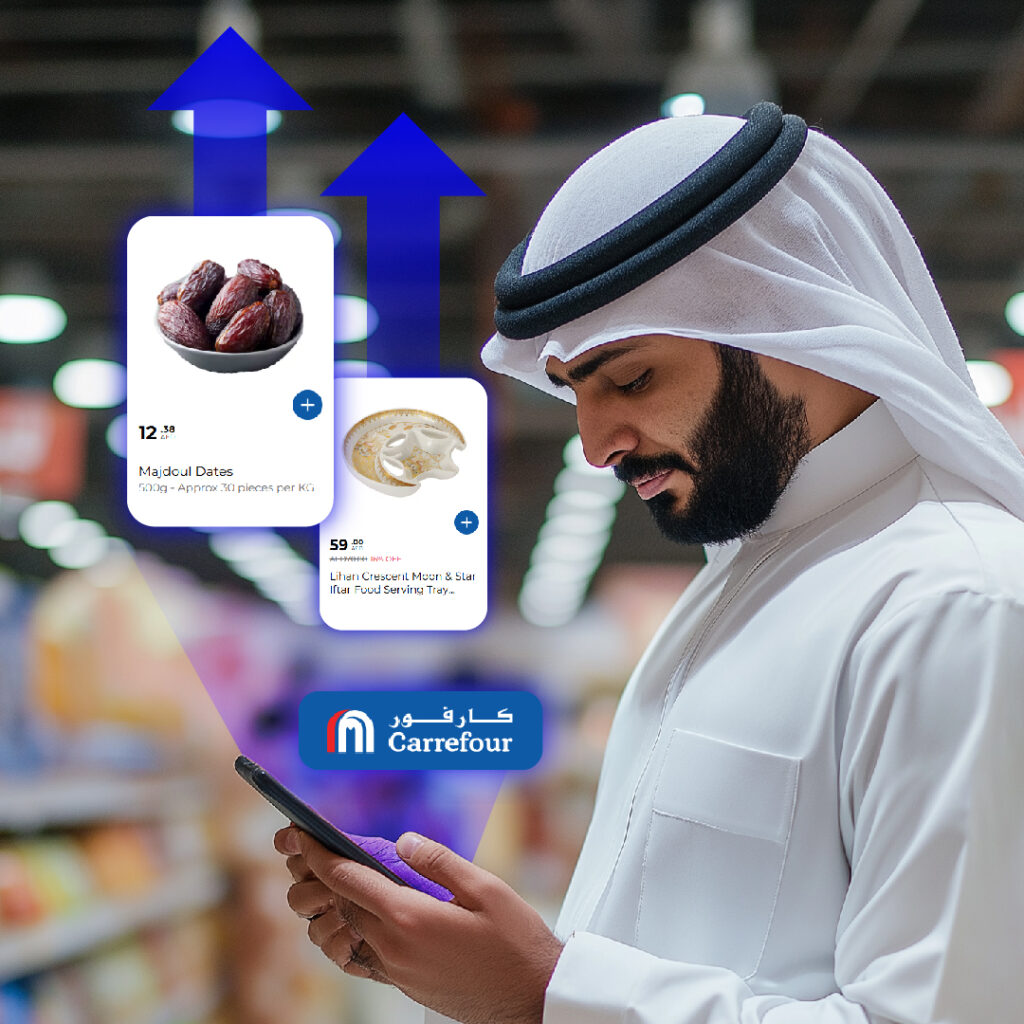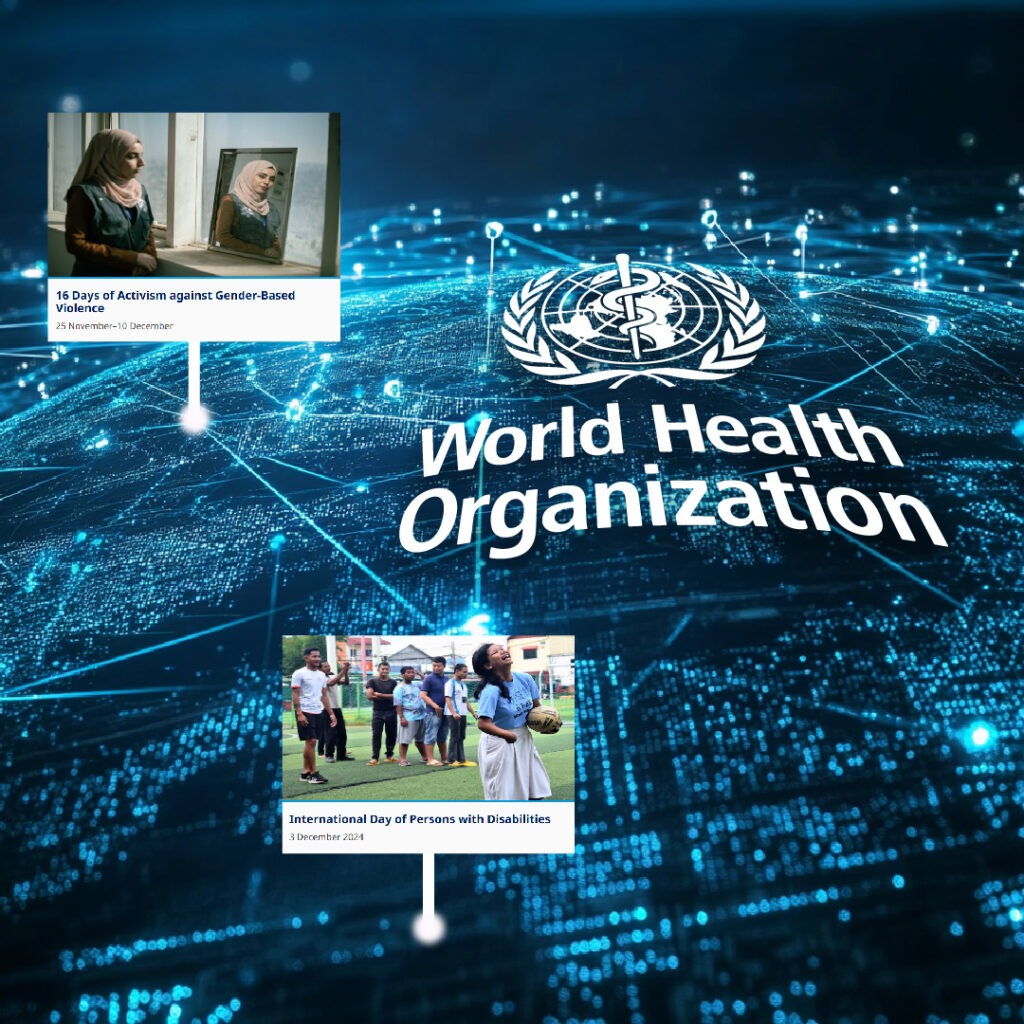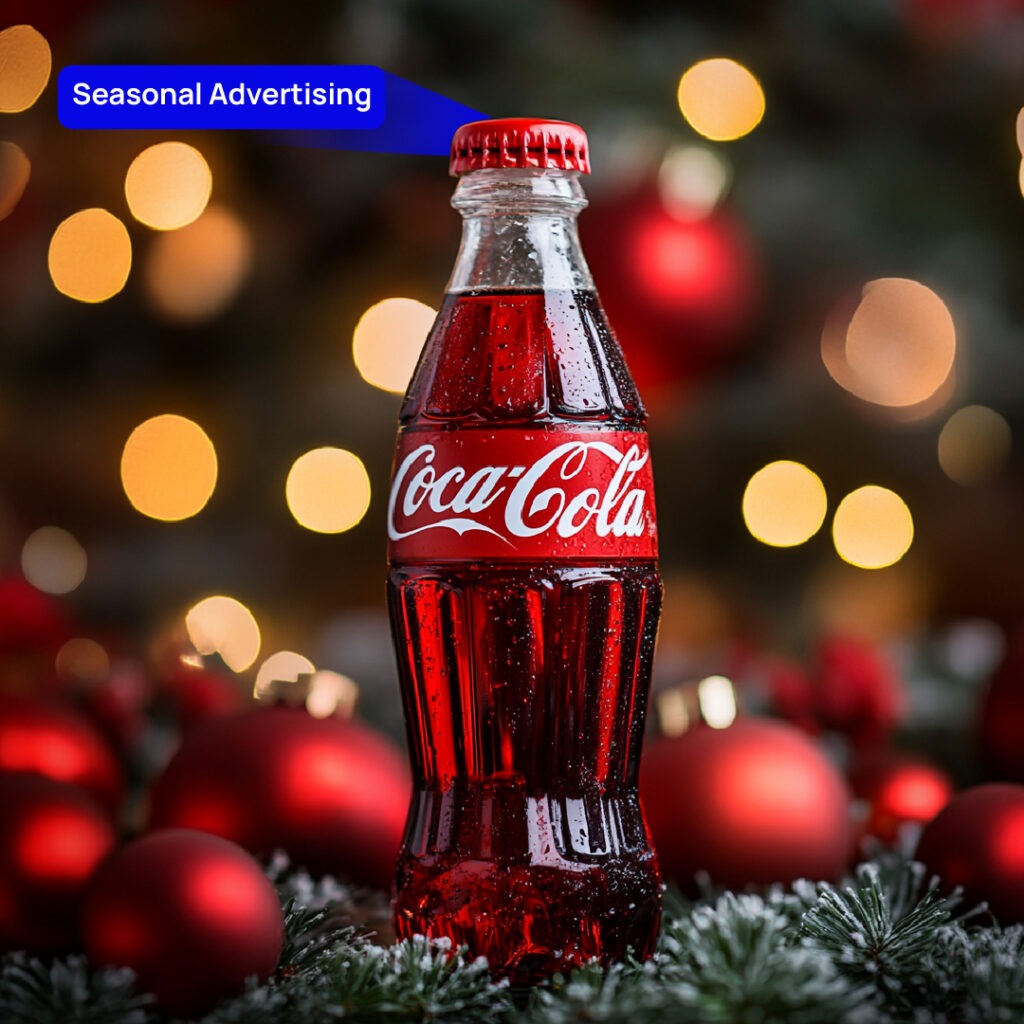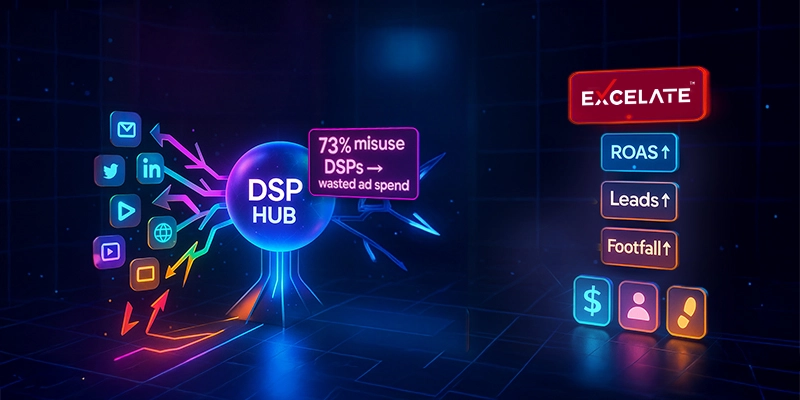Table of Contents
TogglePredictive analytics have transformed the advertising environment by employing data-driven insights to foresee outcomes, allowing marketers to make more informed, efficient decisions. Predictive models help businesses understand client behaviors, optimize campaign performance, and drive higher returns on ad spend (ROAS) by analyzing previous data and recognizing patterns.
Discover how some of the largest companies and organizations globally use predictive analytics to create impactful campaigns and achieve exceptional ROAS.
1- Carrefour’s Targeted Promotions in the GCC
Carrefour, operated by Majid Al Futtaim in the GCC, uses predictive analytics to forecast high-demand products during culturally significant periods such as Ramadan and Eid. Carrefour tailors its promos to regional buying preferences by studying purchasing trends, foot traffic, and seasonal behaviors. This allows Carrefour to provide tailored adverts to customers interested in certain products during peak times.
- Outcome: Carrefour’s targeted approach ensures that its ads are relevant to the cultural context, leading to increased engagement, higher sales, and reduced ad waste.

2- Netflix’s Content Promotion Strategy
Netflix is well-known for its data-driven approach to content promotion among its subscribers. Netflix tailors its ad campaigns using predictive analytics, which predicts which episodes or movies would be most appealing to particular viewers based on their viewing history and engagement trends. By pushing new releases or suggesting certain episodes, Netflix increases the likelihood that each viewer will interact with recommended material.
- Outcome: This predictive strategy results in higher engagement with promoted content, reduced churn rates, and increased watch time, all while improving campaign performance by ensuring that users see content, they’re likely to enjoy.

3- Amazon’s AI-Powered Ad Targeting
Amazon’s predictive bidding technology is critical for enhancing its advertising approach. Amazon uses artificial intelligence and machine learning to evaluate enormous amounts of data on user searches, purchasing history, and click behavior in order to anticipate which consumers are most likely to make a purchase. With this knowledge, Amazon may dynamically alter bids to target high-value customers at the optimal moment and through the most effective channels.
- Outcome: Amazon’s predictive bidding allows it to spend ad dollars more efficiently, maximizing ROAS by focusing on audiences with the highest likelihood to convert, thus improving overall campaign profitability.

4- WHO’s Health Awareness Efforts
The World Health Organization (WHO) leverages predictive analytics to enhance the reach and effectiveness of its health awareness campaigns. By analyzing data on regional health trends, demographics, and prior response patterns, WHO can identify communities at higher risk for specific health issues. This approach allows the organization to deliver precise, culturally relevant messages where they’re most needed. For instance, during the COVID-19 pandemic, WHO used predictive models to forecast the timing and channels most likely to increase engagement with vaccination, hygiene, and social distancing campaigns. This data-driven targeting improved message relevance and timing, leading to higher awareness and compliance rates in key populations.

- Outcome: WHO’s data-driven targeting improves the effectiveness of public health campaigns, reaching the right people with critical information at the optimal time and boosting engagement and compliance with health guidelines.
5- STC’s Real-Time Adjustments for Customer Retention
Saudi Telecom Company (STC) leverages predictive analytics to monitor customer usage patterns, enabling them to identify users at risk of churning. By analyzing data on customer behavior, such as service usage, engagement frequency, and satisfaction levels, STC can accurately forecast potential churn and take preemptive action. Targeted, personalized loyalty offers and discounts are then delivered in real-time through digital ads, SMS campaigns, or app notifications. This predictive approach allows STC to re-engage at-risk customers more effectively, leading to increased retention and higher ROI on retention campaigns, as it reduces the need for costlier acquisition efforts.

- Outcome: STC’s proactive strategy helps reduce churn rates, enhances customer loyalty, and optimizes campaign performance by focusing efforts on the segments most likely to respond positively to retention incentives.
6- Coca-Cola’s Predictive Advertising for Seasonal Marketing
Coca-Cola leverages predictive analytics for seasonal advertising, particularly around holidays like Christmas. By analyzing consumer sentiment, historical sales data, and social media activity, Coca-Cola can anticipate the products, messaging, and timing that will resonate most with its target audiences. Predictive models also allow Coca-Cola to adjust campaigns in real time, tweaking messages or adjusting bids based on engagement and conversion rates.
- Outcome: Coca-Cola’s predictive adjustments lead to more efficient ad spend and increased seasonal engagement, helping the company capture attention during high-demand periods and maximize holiday-related ROAS.

Transformative Benefits of Predictive Analytics for Ad Campaigns
• Enhanced Targeting Precision
Predictive analytics delivers a more in-depth understanding of customer activity patterns, allowing ads to target more engaged audiences while lowering wasteful ad expenditure.
• Greater Campaign Efficiency
Predictive models enable real-time ad placement optimization, allowing for agile decision-making that is closely aligned with changing consumer moods and trends.
• Increased ROAS with Targeted Bidding
Predictive bidding systems enable more strategic ad budget allocation, directing resources toward high-value clients and optimizing ad spend returns.
• Higher Engagement Through Personalization
Predictive insights provide highly personalized ad experiences that are relevant to individual tastes, resulting in higher audience engagement and conversion rates.










